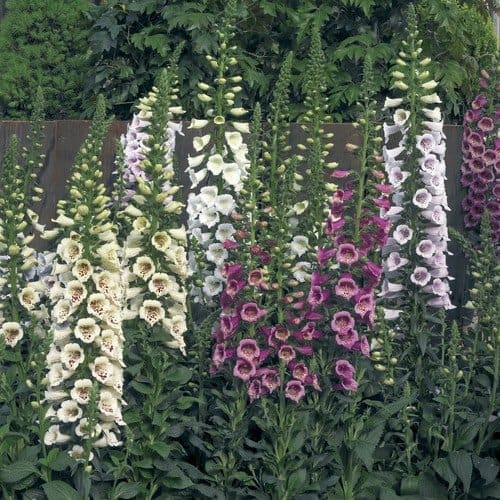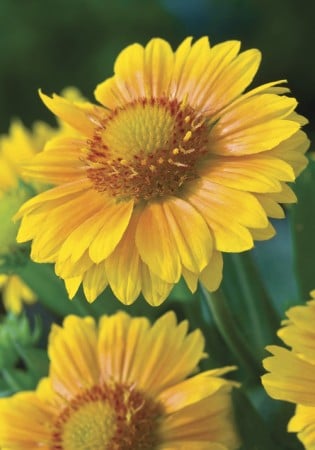
Is it too early to think about planting perennials? Yes, I know, it’s just the beginning of February, and the cold weeks ahead seem like a long stretch to spring. But sowing seed indoors during deepest winter can prompt some precocious perennials into blooming in their first season, and that’s an effective way to get the jump on spring. The trick is to get busy, order the seeds now and plant them as soon as possible. I’ve been searching seed catalogues for first-year bloomers and have found several good candidates.
Many perennials grown from seed produce only foliage in their first summer, and won’t begin flowering until the second season. A smaller group of perennials are capable of faster growth, and if seeded in January or February, will quickly reach an early stage of maturity, which allows them to produce flowers the first season. They won’t be fully mature plants — they’ll be more like teenagers in the first season — and will behave differently when they mature in the second summer. First-year plants will have smaller crowns with less stored energy, thus produce fewer flowers, and double-flowering plants might have single-count petals the first season. But even a sampling of flowers will demonstrate the colour and form to expect when the plant is up to full size and productivity.
Some first-year bloomers are especially precocious, like ‘Blue Pearl’ Jacob’s ladder (Polemonium ‘Blue Pearl’, Zone 5), which will bloom 90 days from seeding. The hardy perennial foxgloves Dalmatian Mix and Camelot Mix (Digitalis purpurea, Zone 5) will also show their speckled bell flowers the first year, though on shorter stems and with fewer bells.
Others will be a bit off schedule as their nascent crowns grow and accumulate flower-making energy, sending out their sampling of blooms later than usual. ‘Blue Bouquet’ veronica (Veronica spicata ‘Blue Bouquet’, Zone 4) would normally begin blooming in late spring, but a first-year plant might not show flowers until mid to late summer. Delphinium ‘Dasante Blue’ (Delphinium elatum ‘Dasante Blue’, Zone 5) or any of the Summer Series or Benary’s Pacific Giants Series delphiniums (D. hybrida, Zone 5) can be expected to flower on shorter stalks the first year, as will several new coneflowers (Echinacea, Zone 4), such as PowWow White, PowWow Wild Berry, Cheyenne Spirit and Prairie Splendor Purple.
Ideal growing conditions will give you the most success. Follow seed packet directions carefully — some seeds will require brief chilling at a specific temperature (and perhaps darkness) for germination. Some will need covering with a thin layer of planting mix, others will need to be left uncovered.
Once the seedlings are up and standing under lights, monitor moisture levels carefully so that they never have their growth checked by dry soil. Indoor light requirements are important to support early energy production for crown development, but even if you don’t have a light stand, it’s worth trying some pots of young plants by a sunny window (most seedlings will be glad of the night-time temperature drop). Fertilizing can be a valuable boost to early growth, but take care with the amounts of nutrients delivered. Cutting the ratio of fertilizer by 50 per cent will augment growth and prevent overdosing accidents.
Set young plants outdoors in late May, but be sure to harden them off for 10 days to acclimate them to outdoor temperatures, sunlight exposure and wind. I put mine out for two hours on the first day and then whisk them into the garage at night. I gradually lengthen their time outdoors each day, until they’re ready to go permanently into garden beds.

Other first-year blooming perennials include ‘Profusion’ and ‘Stallone’ Spanish daisies (Erigeron karvinskianus ‘Profusion’ and ‘Stallone’); several cultivars of Mexican blanketflowers (Gaillardia), including ‘Mesa Peach’, ‘Mesa Yellow’, ‘Mesa Bicolor’, ‘Arizona Sun’ and ‘Arizona Apricot’; ‘Sparkle White’ butterfly gaura (Gaura lindheimeri ‘Sparkle White’); ‘Mon Amie Blue’ forget-me-not (Myosotis ‘Mon Amie Blue’); Wonderland Mix Iceland poppy (Papaver nudicaule Wonderland Mix); and painted daisy Robinson’s Giant Mix (Tanacetum coccineum Robinson’s Giant Mix).
If you’d like to get a jump on spring with any of these precocious perennials, the directive is clear — hurry, hurry!

Awesome info I plan to share with my gardening friends